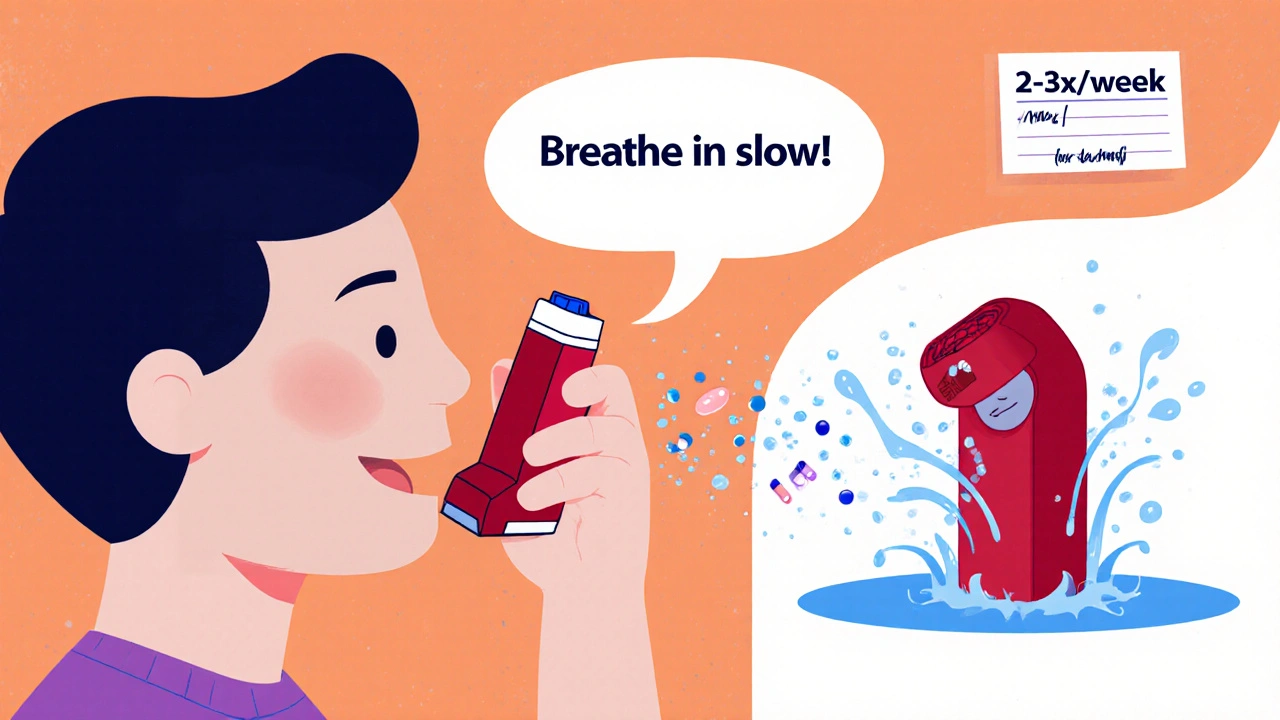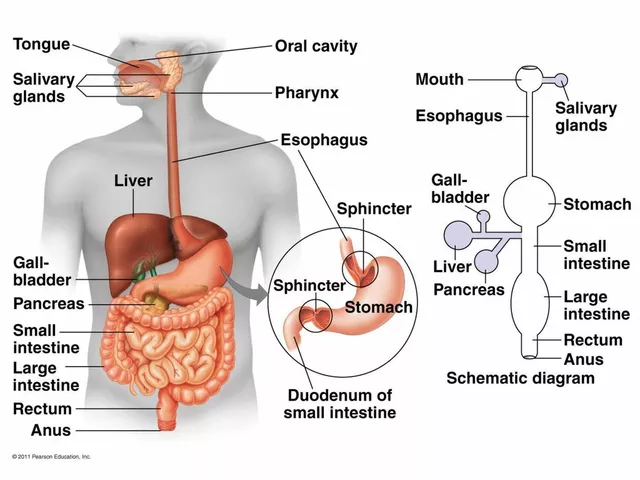When you struggle to breathe, it’s not just annoying-it’s terrifying. Your chest feels tight, your lungs won’t expand, and no matter how hard you try, air just won’t come in. For millions with asthma or COPD, this isn’t a rare moment. It’s part of daily life. But there’s a reason so many people carry small inhalers in their pockets: bronchodilators and corticosteroids work. Not magically, not instantly for everything-but together, they change everything.
What bronchodilators actually do
Bronchodilators don’t fix the root problem. They don’t cure inflammation or stop your airways from getting sensitive. What they do is simple: they open your airways. Think of your breathing tubes like a garden hose that’s been stepped on. Bronchodilators are your foot lifting off the hose, letting water flow again. There are two main types. The first are beta-2 agonists, like albuterol (also called salbutamol). These hit receptors in your airway muscles and tell them to relax. You feel it within 15 minutes. Your breathing gets easier. The effect lasts 4 to 6 hours. That’s why they’re your blue inhaler-the one you grab when you’re wheezing after climbing stairs or caught in cold air. The second type is anticholinergics, like ipratropium or tiotropium. These block a chemical in your body (acetylcholine) that makes airways tighten. They take a little longer to kick in-about 15 minutes-but they last longer. Tiotropium? One puff gives you 24 hours of relief. That’s why they’re often used in COPD. Long-acting bronchodilators (LABAs) like salmeterol or formoterol work the same way but last 12 hours or more. They’re not for emergencies. You can’t use them when you’re gasping. They’re for daily control. And here’s the critical part: using them alone is dangerous. Studies show people who rely only on LABAs for asthma have a 3.5 times higher risk of dying from an asthma attack. That’s why they’re always paired with corticosteroids.What corticosteroids actually do
Corticosteroids are the quiet heroes. They don’t make you breathe easier right away. You won’t feel a difference after your first puff. But over days and weeks, they quietly rebuild your airways. These aren’t the same as the steroids athletes abuse. These are inhaled anti-inflammatory drugs. They work by slipping into cells in your lungs and turning down the volume on inflammation. They silence over 100 genes that cause swelling, mucus, and irritation. They stabilize the walls of your blood vessels so fluid doesn’t leak into your airways. They reduce the number of immune cells that hang around and cause trouble. Common ones? Fluticasone (Flovent), budesonide (Pulmicort), beclomethasone (Qvar), mometasone (Asmanex). These are your brown, red, or orange inhalers-the ones you use every day, even when you feel fine. The magic? They prevent flare-ups. Regular use cuts asthma exacerbations by 30% to 60%. For COPD patients, they reduce hospital visits by nearly half. But they only work if you use them every day. Skip a few days? Your airways start swelling again. Skip weeks? You’re back to relying on your rescue inhaler-and that’s a warning sign.Why you need both
You wouldn’t fix a leaky roof by just mopping the floor. You fix the leak, then clean up the mess. That’s exactly how these two drugs work together. Bronchodilators open the door. Corticosteroids walk in and clean house. When your airways are tight, corticosteroids can’t reach deep into the small airways where inflammation hides. But if you first use a bronchodilator, your airways open up. The steroid particles can travel deeper. Studies show this simple trick-waiting 5 minutes between inhalers-boosts corticosteroid delivery by up to 40%. That’s why doctors tell you: blue first, brown second. Always. Even if you’re in a rush. Even if you’re tired. Even if you just used your rescue inhaler 30 minutes ago. Wait. Breathe. Then take your steroid. Combination inhalers like Advair (fluticasone/salmeterol) and Symbicort (budesonide/formoterol) make this easier. One device, two drugs. But even then, the timing matters. Symbicort is now approved as an as-needed treatment for mild asthma because formoterol works fast enough to act as both rescue and controller. That’s a big shift in guidelines-GINA 2023 now recommends this over using albuterol alone.
What goes wrong
The biggest mistake? Using bronchodilators too much. If you’re using your blue inhaler more than 2-3 times a week, your asthma isn’t controlled. You’re not fixing the problem-you’re putting out fires. And overusing albuterol can actually make your airways more sensitive over time. Some heavy users lose up to half their response to the drug. That’s not tolerance. It’s damage. Then there’s the corticosteroid side effect everyone talks about: oral thrush. A white, patchy coating in your mouth. It happens in 5% to 10% of users. It’s not dangerous, but it’s annoying. And it’s 100% preventable. Rinse your mouth with water after every inhaler. Spit it out. Don’t swallow. That simple step cuts thrush risk by 80%. Hoarseness? That’s common too. The steroid sticks to your vocal cords. Rinse. Gargle. Same fix. And yes, long-term high-dose steroids can increase pneumonia risk in older COPD patients. That’s why doctors don’t prescribe them unless you’ve had two or more flare-ups in a year. It’s about balance-control versus risk.How to use your inhaler right
Here’s the hard truth: 69% of people use their inhalers wrong. No matter how good the drug is, if it doesn’t reach your lungs, it’s useless. Metered-dose inhalers (MDIs) need a slow, deep breath. If you spray and then breathe fast, most of the medicine hits your tongue and throat. The right way? Shake the inhaler. Breathe out fully. Put the mouthpiece in. Press down as you start breathing in slowly. Hold your breath for 10 seconds. Then breathe out. Spacers help. These plastic tubes attach to your inhaler and hold the medicine so you don’t have to time your breath perfectly. Studies show they improve delivery by 70%. If you’re struggling, ask your pharmacist for one. They’re free or low-cost. Dry powder inhalers (DPIs) are different. You don’t press a button. You breathe in hard and fast. If you breathe too slowly, the powder won’t open up and reach your lungs. Practice with a trainer inhaler first. And never forget: if you’re using two inhalers, always use the bronchodilator first. Wait five minutes. Then the corticosteroid. This isn’t advice. It’s science.
What’s new
The field is changing fast. In 2023, the FDA approved Airsupra-a single inhaler that combines albuterol and budesonide. It’s designed for as-needed use. One puff gives you quick relief and immediate anti-inflammatory action. No waiting. No two-step process. For mild asthma, this could be a game-changer. Triple-therapy inhalers like Trelegy Ellipta (fluticasone/umeclidinium/vilanterol) are now used for severe COPD. They combine two bronchodilators (LABA + LAMA) with a corticosteroid. They cut exacerbations by 25% compared to dual therapy. Doctors are also using FeNO tests-measuring nitric oxide in your breath-to see how much inflammation you have. High FeNO? You likely need more steroid. Low FeNO? Maybe you can reduce your dose. It’s personalized medicine, and it’s becoming standard.What you should do today
If you’re on these medications:- Know which inhaler is which. Blue or green? Rescue. Brown, red, or orange? Daily controller.
- Use your rescue inhaler no more than 2-3 times a week. If you’re using it more, talk to your doctor.
- Always use your bronchodilator before your corticosteroid. Wait five minutes.
- Rinse your mouth after every corticosteroid puff.
- Ask for a spacer if you’re having trouble coordinating your breath.
- Don’t stop your steroid inhaler just because you feel fine. Stopping is what causes flare-ups.
Bottom line
Bronchodilators give you back your breath. Corticosteroids give you back your life. They’re not magic. They’re medicine. And like any medicine, they only work if you use them right. You don’t need to understand every gene or receptor. You just need to know: blue first, brown second. Rinse your mouth. Use it every day. And if your rescue inhaler is running out too fast-you’re not managing your disease. You’re just surviving it.Can I use a bronchodilator every day?
Short-acting bronchodilators like albuterol are meant for emergencies only. Using them daily means your asthma isn’t controlled. Long-acting bronchodilators (LABAs) are designed for daily use-but only when combined with an inhaled corticosteroid. Never use a LABA alone for asthma.
Why do I need to rinse my mouth after using a corticosteroid inhaler?
Rinsing removes leftover steroid from your mouth and throat. This prevents oral thrush (a fungal infection), hoarseness, and irritation. Swallowing the rinse doesn’t help-it increases the chance of side effects. Spit it out after rinsing.
How long does it take for corticosteroids to start working?
Corticosteroids don’t work right away. You won’t feel better after one or two puffs. It takes consistent use over days or weeks to reduce inflammation. Most people notice fewer symptoms after 1-2 weeks, with full benefit after 4-6 weeks.
Is it safe to use combination inhalers like Advair or Symbicort?
Yes, when used as directed. These combinations are the standard of care for moderate to severe asthma and COPD. They reduce flare-ups, hospital visits, and improve lung function. The FDA requires black box warnings for LABAs because of risks when used alone-but when paired with corticosteroids, the benefits far outweigh the risks.
What should I do if my inhaler doesn’t seem to be working?
First, check your technique. Are you using a spacer? Are you breathing in slowly? Are you rinsing after steroid inhalers? If you’re sure your technique is right, you may need a higher dose or a different medication. Don’t increase your dose on your own. Talk to your doctor. You might need a FeNO test or a review of your asthma action plan.
Can I stop my corticosteroid inhaler if I feel better?
No. Stopping your corticosteroid inhaler-even if you feel fine-is the most common reason for asthma flare-ups. Inflammation can return silently. Your airways may still be swollen even if you’re not wheezing. Always follow your doctor’s plan. If you want to reduce your dose, ask your doctor to help you taper safely.
For more help, call the American Lung Association’s Lung HelpLine at 1-800-LUNGUSA. They offer free coaching on inhaler use, asthma action plans, and managing side effects. You’re not alone.







Nicole Ziegler
November 20, 2025 AT 07:43Bharat Alasandi
November 21, 2025 AT 23:46Kristi Bennardo
November 23, 2025 AT 05:36Shiv Karan Singh
November 23, 2025 AT 12:29Ravi boy
November 24, 2025 AT 09:26Matthew Karrs
November 26, 2025 AT 03:31Matthew Peters
November 26, 2025 AT 21:45Liam Strachan
November 27, 2025 AT 06:07Gerald Cheruiyot
November 27, 2025 AT 21:01Michael Fessler
November 28, 2025 AT 14:36daniel lopez
November 30, 2025 AT 11:08Nosipho Mbambo
December 1, 2025 AT 14:54Katie Magnus
December 2, 2025 AT 21:36King Over
December 3, 2025 AT 03:58Johannah Lavin
December 4, 2025 AT 01:08